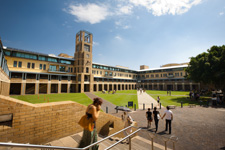East Asia - ARTS2211
Faculty: Faculty of Arts and Social Sciences
School: School of Humanities and Languages
Course Outline: School of Humanities & Languages
Campus: Sydney
Career: Undergraduate
Units of Credit: 6
EFTSL: 0.12500 (more info)
Indicative Contact Hours per Week: 3
Enrolment Requirements:
Prerequisite: 30 units of credit at Level 1; or 24 units of credit and enrolment in a History or Korean Studies extended minor in Arts/Education (4053)
CSS Contribution Charge: 1 (more info)
Tuition Fee: See Tuition Fee Schedule
Further Information: See Class Timetable
Available for General Education: Yes (more info)
View course information for previous years.
Description
Subject Area: Asian Studies
This course can also be studied in the following specialisations: History, Indonesian Studies, Korean Studies
This course focuses on interactions among China, Korea, and Japan; their relations with the West; and the issues of culture and civilization in the post-nation-state era. The course is organized thematically. You will start by examining East Asia in terms of its history of globalization through cultural and religious interaction. You will then turn to fundamental cultural commonalities centring on statecraft, institutions, education and notions of civilization that united and divided the region. You will examine cross-cultural comparisons among China, Japan, and Korea that highlight the global and regional dimensions of cultural change in East Asia. You will study how cultural similarities and differences influenced the varying approaches to modernity taken by Chinese, Japanese and Korean activists when East Asia came under increasing pressure from the West. The formation of nation-state ideologies along Western lines led to evolving conceptions of their place in the world, the meaning of culture, the role of commerce, and the relationship of the individual to the state. But in the era of globalization, these issues are situated in a post-nation-state framework. You will conclude by assessing East Asia’s contributions to globalization.
This course is taught in English and with readings in English.










